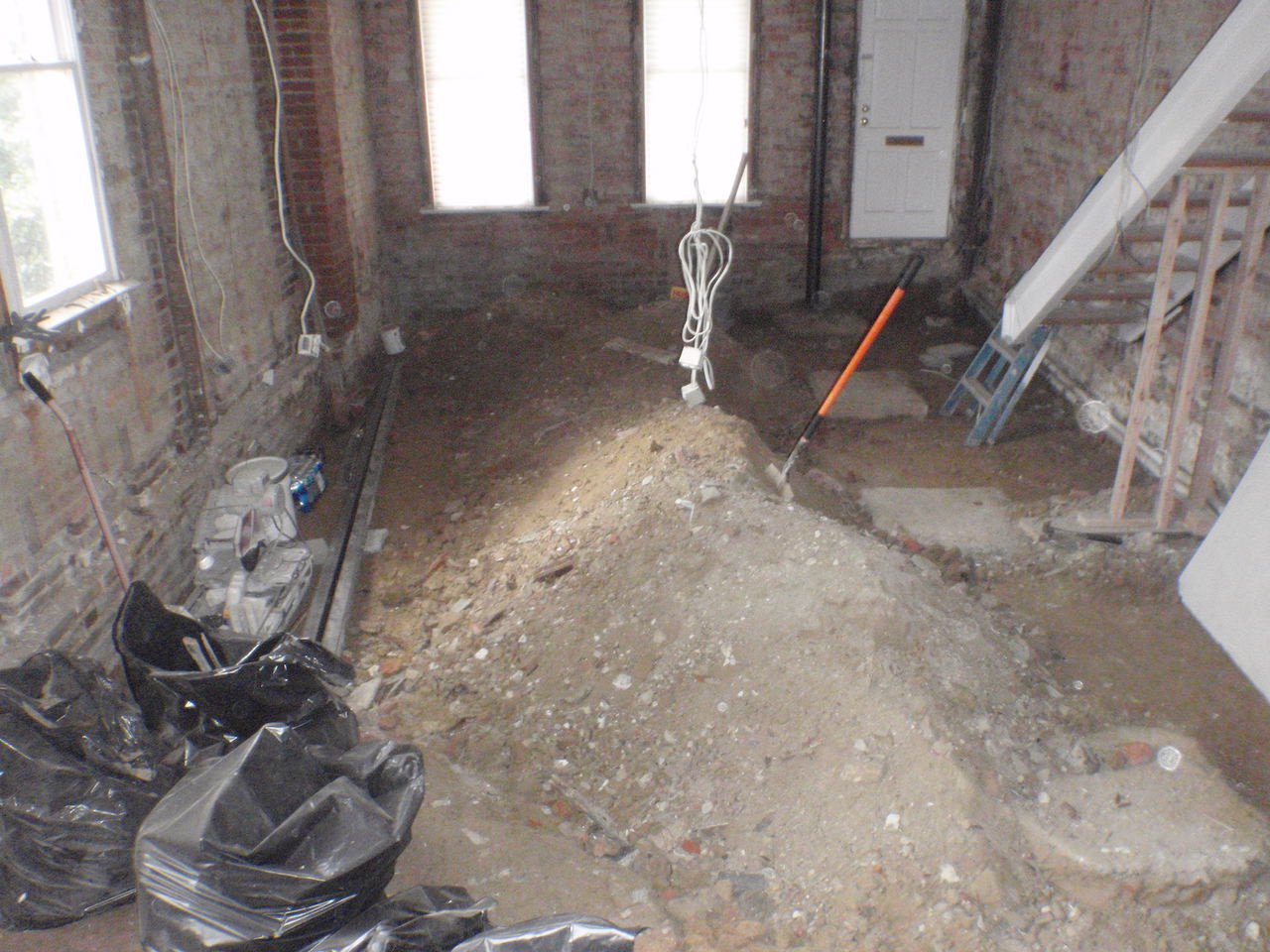(Updated 4:35 p.m.) A 140-year-old historic home in Arlington owned and built by Harry Gray, who was formerly enslaved at Arlington House, is for sale with an asking price of $915,000.
“A masonry D.C. row house with the convenience of an Arlington location,” reads the real estate listing. “As soon as you walk in from your front porch the home shines with its exposed brick and tall ceilings & windows, giving it a spacious, cozy feel.”
Located at 1005 S. Quinn Street, right off of Columbia Pike, the building is on the National Register for Historic Places and is protected by the county under the “historic district” designation. This means that certain exterior alterations have to be approved by the county’s Historical Affairs and Landmark Review Board (HALRB).
Harry W. Gray built the house in 1881 as a home for him and his wife, Martha, herself, formerly enslaved on James Madison’s Montpelier plantation.
The son of Selina Gray, Harry was born at Robert E. Lee’s Arlington House estate and was enslaved there until he was 12 years old. According to Virginia law at the time, he was property of George Washington Parke Custis, George Washington’s step-grandson and the father-in-law of Robert E. Lee.
After that, he lived at nearby Freedman’s Village and worked at local brickyards where he honed his skills as a mason. Later, he became an employee of the U.S. Patent Office and, inspired by the rowhouses he saw while working downtown, built one for his family in Arlington, near Freedman’s Village.
Constructed in the fashionable Italianate style of the late 19th century, the home is two stories tall with a solid brick foundation and standing-seam metal shallow-pitched shed roof. To this day, the home is a rare example of a brick rowhouse in the county.
“It’s a visible relic of a formerly enslaved person from Arlington House and Freedman’s Village, who went on to become middle class,” local author and historian Charlie Clark tells ARLnow about the house.
However, owning a historic home of this nature comes with a unique responsibility.
In 1984, the Harry Gray House became one of the first buildings in the county to be given the historic district designation. Currently, there are 13 single-family homes with this designation in the county, with only a handful of those remaining private residences (the rest are owned by the county or state).
This protects the Harry Gray property from “insensitive alterations,” says Cynthia Liccese-Torres, Program Coordinator for Historic Preservation in Arlington County.
“It’s not owned by the county, but we are tasked with the responsibility of helping any owner be the proper steward of the house,” she says.
While the exterior is protected, that doesn’t mean alterations and changes can’t happen. Liccese-Torres explains that the county has no purview on what happens with the interior, hence why the listing notes the extensive work that’s gone on inside — one of a number of interior renovations over the years.
If the owner notices a rotting front column or a leaky roof, says Liccese-Torres, replacement with the exact same materials and with the dimensions are allowed to happen without approval.
These are known as “in-kind” replacements.
If the owner wanted to build an addition or enclose a front porch, that’s an example of something that would need to go through the HALRB. Requests of this nature have been approved in the recent past.
“Those approvals show this property continues to be adapted,” says Liccese-Torres. “Here we are in 2021 and changes are still allowed to happen. It’s not a static museum piece. It is a home that has been adapted to serve people’s needs over time.”
The house last went on sale in 2011 and was purchased by Cameron and Catherine Saadat.
“We [lived] in Old Town before that, so we had already kind of gotten the appreciation for older homes,” says Cameron. “We happened to see this come on the market and just kind of fell in love with the D.C.-style rowhouse.”
They paid about $387,000 for the house, which was in foreclosure. The couple says that, over the last decade, they’ve poured about $300,000 worth of work into the home, including a complete renovation of the interior.
“Everything was gutted, down to the studs,” says Catherine. In the process, they found issues with termites, electric, plumbing, and HVAC, which they also fixed.
Over the years, they’ve done several “in-kind” replacements including replacing some brick mortar and adding a new metal roof — work which is ongoing this week).
There was also the addition of a bedroom for their son. The couple admits that the process to get that approved was “a little bit frustrating” since it did slow down construction.
But now the Saadat family is ready to move. They say that their growing family of four, including two young sons, is ready for a lifestyle change, so they are moving to the beaches of North Carolina.
But they will always remember their time in this historic home.
“It’s not a big home,” says Cameron. “But raising two little kids in that home, I think, was perfect… it was really hard for us to move with a lot of memories there with the family.”
So far, the Saadats say, they haven’t received any offers for the house, but they expect that to change given the hot housing market. If interested, reach out to their realtor Bob Hotaling, the family says.
Liccese-Torres hopes the next owner of the Harry Gray house continues to be a steward of its history.
“[The perfect owner] would be someone who values and understands the history of this particular house,” she says. “And be just not an owner and a… resident of the house, but someone who’s going to give it the proper care that it needs and is willing to be a steward.”










